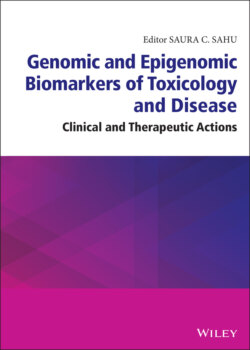Читать книгу Genomic and Epigenomic Biomarkers of Toxicology and Disease - Группа авторов - Страница 51
Exposure to Metals
ОглавлениеHeavy metal contamination of water, soil, and air can occur as a result of natural phenomena such as soil erosion, atmospheric deposition, and volcanic eruptions (Tchounwou et al. 2012). Furthermore, modern industrial practices have resulted in increased human exposure to heavy metal through mining, smelting, agriculture, industrial processing, by-products, and effluents, as well as in domestic use of metals and metal-containing compounds (Tchounwou et al. 2012). Heavy metal exposure can occur through inhalation, ingestion, or contact with the skin (See Figure 4.1). The effects and the severity of metal toxicity can vary considerably according to the specific metal, its chemical form, its physio-chemical properties, the duration of exposure (acute or chronic), the route of exposure, and individual susceptibility as shaped by genetics, lifestyle factors, and nutritional status (Rajkumar and Gupta 2021). Depending on the dosage and duration of exposure, heavy metals can exert both acute and chronic effects, causing multi-organ maladies such as gastrointestinal and kidney dysfunction, nervous system disorders, skin lesions, vascular damage, immune system dysfunction, birth defects, and cancer (Balali-Mood et al. 2021).
Figure 4.1 Major routes of exposure for heavy metals. The most common sources, modes, and routes of exposure for arsenic (As), cadmium (Cd), chromium (Cr), mercury (Hg), and lead (Pb) are depicted. Large bold blue text indicates the predominant route of exposure for individual metals, while black small text indicates additional exposure routes. For Cd, ingestion is the predominant exposure route in the non-smoking population, while inhalation of cigarette smoke is the predominant exposure source in smokers.
